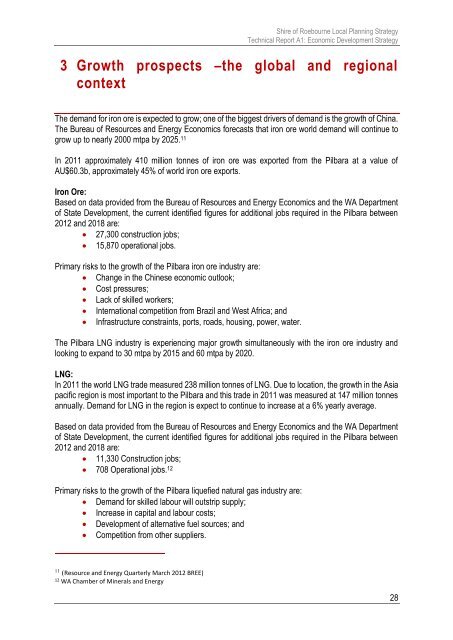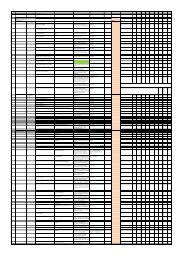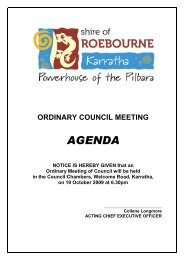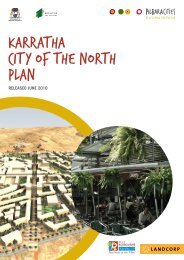Shire of Roebourne Local Planning Strategy
Shire of Roebourne Local Planning Strategy
Shire of Roebourne Local Planning Strategy
You also want an ePaper? Increase the reach of your titles
YUMPU automatically turns print PDFs into web optimized ePapers that Google loves.
<strong>Shire</strong> <strong>of</strong> <strong>Roebourne</strong> <strong>Local</strong> <strong>Planning</strong> <strong>Strategy</strong>Technical Report A1: Economic Development <strong>Strategy</strong>3 Growth prospects –the global and regionalcontextThe demand for iron ore is expected to grow; one <strong>of</strong> the biggest drivers <strong>of</strong> demand is the growth <strong>of</strong> China.The Bureau <strong>of</strong> Resources and Energy Economics forecasts that iron ore world demand will continue togrow up to nearly 2000 mtpa by 2025. 11In 2011 approximately 410 million tonnes <strong>of</strong> iron ore was exported from the Pilbara at a value <strong>of</strong>AU$60.3b, approximately 45% <strong>of</strong> world iron ore exports.Iron Ore:Based on data provided from the Bureau <strong>of</strong> Resources and Energy Economics and the WA Department<strong>of</strong> State Development, the current identified figures for additional jobs required in the Pilbara between2012 and 2018 are: 27,300 construction jobs; 15,870 operational jobs.Primary risks to the growth <strong>of</strong> the Pilbara iron ore industry are: Change in the Chinese economic outlook; Cost pressures; Lack <strong>of</strong> skilled workers; International competition from Brazil and West Africa; and Infrastructure constraints, ports, roads, housing, power, water.The Pilbara LNG industry is experiencing major growth simultaneously with the iron ore industry andlooking to expand to 30 mtpa by 2015 and 60 mtpa by 2020.LNG:In 2011 the world LNG trade measured 238 million tonnes <strong>of</strong> LNG. Due to location, the growth in the Asiapacific region is most important to the Pilbara and this trade in 2011 was measured at 147 million tonnesannually. Demand for LNG in the region is expect to continue to increase at a 6% yearly average.Based on data provided from the Bureau <strong>of</strong> Resources and Energy Economics and the WA Department<strong>of</strong> State Development, the current identified figures for additional jobs required in the Pilbara between2012 and 2018 are: 11,330 Construction jobs; 708 Operational jobs. 12Primary risks to the growth <strong>of</strong> the Pilbara liquefied natural gas industry are: Demand for skilled labour will outstrip supply; Increase in capital and labour costs; Development <strong>of</strong> alternative fuel sources; and Competition from other suppliers.11(Resource and Energy Quarterly March 2012 BREE)12WA Chamber <strong>of</strong> Minerals and Energy28














